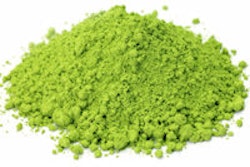Low-level laser therapy (LLLT) has shown promising results in reducing the occurrence of canker sores in head and neck squamous cell carcinoma (HNSCC) patients undergoing concurrent chemoradiotherapy.
That's according to according to trials by Brazilian researchers, who found that almost all HNSCC patients develop canker sores resulting from various treatments, including stem cell transplants, chemotherapy, and radiotherapy. Canker sores are divided in five grades (0 to 4) by the World Health Organization, with severe cases (grades 3 and 4) being associated with pain, weight loss, poor quality of life, and higher hospital costs due to increased healthcare needs. Severe canker sores can also lead to treatment interruption, which may decrease patients' survival.
No effective preventive strategy is currently available for canker sores, but prospective trials of low-level laser therapy done on HNSCC patients undergoing chemoradiotherapy showed promising results, according to a press release from the Brazilian National Cancer Institute (INCA) in Rio de Janeiro.
The trial was performed with 94 HNSCC patients undergoing chemoradiotherapy. They were divided into two groups of 47 people; one group received LLLT while the other received a placebo. Researchers observed a significant difference in the incidence of canker sore grades 3 and 4 between the groups.
In the laser therapy group, three patients developed severe canker sores, while 19 in the placebo group developed them. There were also significant differences in the absence of canker sores (grades 0-1): 59.6% of the LLLT were free of canker sores, compared with 21.3% in the placebo group. The LLLT group also had less severe oral pain and used fewer opioid analgesics. They were also less likely to require gastrostomy throughout cancer treatment.



















